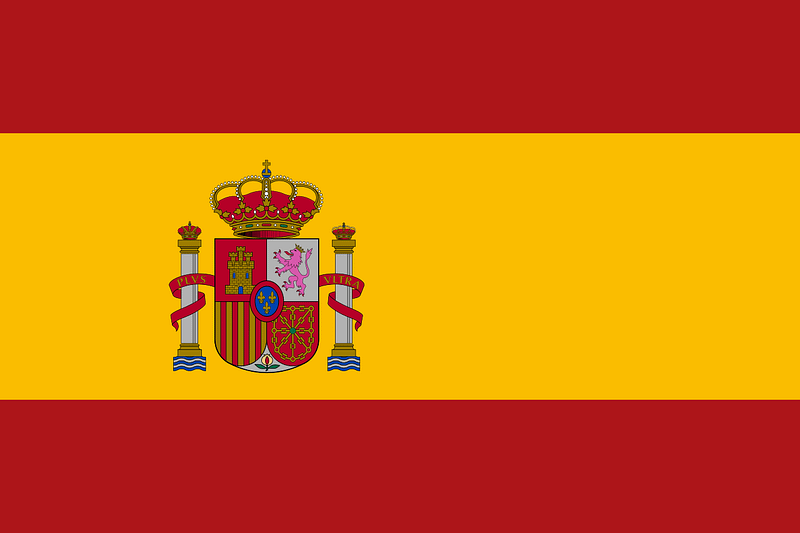This travel wiki page of Spain will help guide travelers with quick and relevant information to consider when planning and visiting the country. It is difficult to find all the relevant information on Spanish culture, safety, travel restrictions, and things to do, so we summarize it all here. If anything is stale or outdated, please let us know! Let’s dive in and explore more high-level information as a Spain trip planner.
Last updated November 26th of 2023.
Table of contents
National Information & Culture

Spain, or the Kingdom of Spain, is a Southwestern European country. Its territory comprises the Canary Islands in the Atlantic Ocean, Balearic Island in the Mediterranean Sea, and the autonomous cities of Ceuta and Melilla in Africa. Spain shares land borders with France and Andorra to the north, Portugal to the west, the United Kingdom with Gibraltar, and Morocco with Ceuta and Melilla. The country’s capital and largest city is Madrid, and the official currency is Euro (€).
A Schengen state and member of the European Union, Spain is part of many other international organizations. It has a major advanced capitalist economy and a secular parliamentary and monarchial government. Moreover, Spain has a strong Catholic influence, and religious customs are respected. Hence, modest clothing is advisable when visiting churches and sacred sites.
Visit the Official Tourism Website of Spain for more information when planning your trip.
Typical Spanish Culture
When visiting Spain, some cultural aspects and details might be valuable for visitors. Spaniards generally have late dining hours compared to many other countries. Dinner often starts around 9:00 pm or later. Lunch is typically the day’s main meal between 2:00 and 4:00 pm.
The concept of siesta, or a short nap or rest after lunch, is still prevalent in many regions. Remember that some businesses, especially smaller ones, may close for a few hours during siesta.
Spaniards are known for being comfortable with physical proximity. In addition, they may stand closer than what some visitors might be accustomed to. It’s a cultural norm and not meant to be intrusive.
Lastly, Spain is known for its lively festivals and celebrations. Depending on the region and the time of year, travelers might encounter parades, processions, and vibrant street festivals. Embrace the local festivities for an authentic cultural experience.
Special Travel Considerations
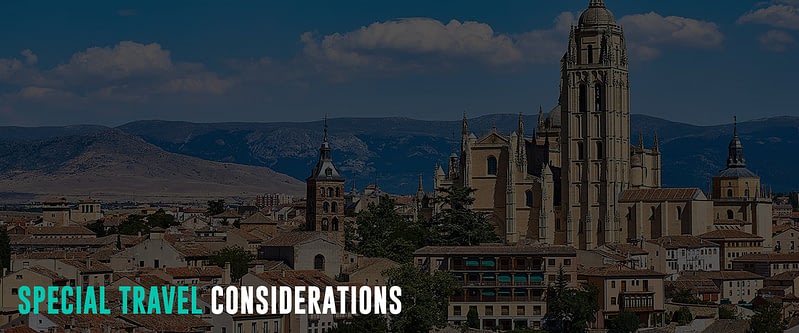
Each country and destination has rules and regulations that every traveler must consider. Hence, check the following considerations for hassle-free travel to Spain.
Covid-19 Policy
Starting February 2023, Spain does not enforce any sanitary requirements concerning COVID-19. However, the Covid-19 protocol may vary over time with the evolution of the pandemic. Hence, visit the country’s Health Ministry website for information updates.
Travel Insurance
Travel insurance is mandatory for travelers applying for a Schengen Visa in Spain. Specifically, insurance coverage has to be at least €30,000 and valid for all the Schengen States.
While travel insurance is optional for other nationals, it is strongly recommended for all visitors to Spain. Preferably, it must cover emergency medical treatment, including Covid-19, repatriation, and evacuation. Travel insurance can protect you against the inconvenience of injury, medical emergencies, theft, and flight cancellations. In addition, it is a comprehensive protection in case anything goes wrong with your trip.
Visa Information
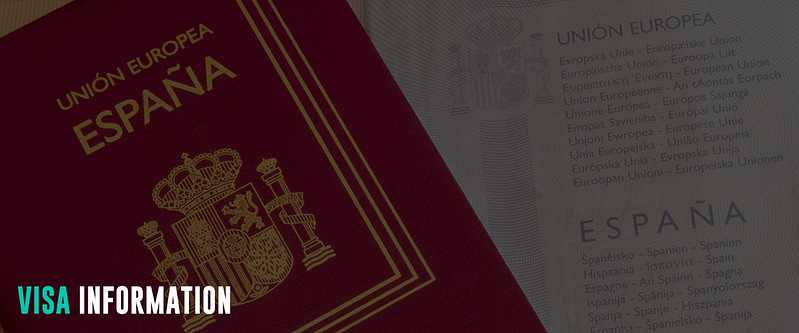
Tourists from European countries in the Schengen area and 63 other countries and territories are visa-free when entering Spain. All other travelers will need a short-stay Schengen visa for a 90-day stay from the nearest Spanish Consulates and Embassies. The Schengen visa allows the holder to travel to any Schengen States and to transit through their territory. Hence, Schengen visa holders issued by other Schengen states can be used to enter Spain.
Check the visa conditions for entry to Spain, depending on their nationalities, listed on pages 51-56. In addition, visitors must meet other documentary requirements that may be presented at the borders.
Aside from a visa, visitors from most European states need a valid identity card to enter Spain. Meanwhile, other travelers need a passport with at least six months of validity.
ETIAS
The European Union will implement European Travel Information and Authorisation (ETIAS) starting mid-2025. It is to boost security across the Schengen zone. ETIAS will be a mandatory requirement for visitors from visa-exempt countries.
ETIAS is a travel permit or a visa waiver program in which all visitors, regardless of age, traveling to the Schengen counties must apply individually at least 96 hours before departure. It will be a multiple-entry permit valid for three years or until the passport expires (whichever comes first) and can be used to visit all ETIAS member countries.
As of this writing, the European Travel Information and Authorisation System (ETIAS) is currently not operating and does not accept applications for travel authorizations. However, applicants can apply for mobile devices via an official website or app before ETIAS is implemented. The date travelers can apply for ETIAS will be published on this website, Europa Home Affairs. You can also find more information on the official ETIAS website of the European Union.
Popular Attractions
Spain ranks third as the world’s most visited country. It is famous for its beaches and is filled with historical and cultural heritage. Spain has the third-largest number of UNESCO World Heritage Sites after Italy and China. Moreover, Spain is very geographically diverse. Apart from its perfect coastline that implies vibrant nightlife, Spain has everything from meadows to snowy mountains and deserts.
Basilica of La Sagrada Familia
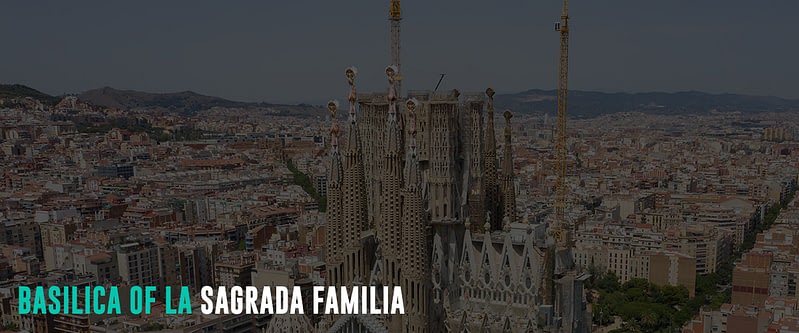
The Basilica de la Sagrada Família in Barcelona, Catalonia, Spain, is an iconic, unfinished Catholic church designed by renowned architect Antoni Gaudí. Recognized as Barcelona’s most popular attraction, it is characterized by fantastical features inspired by nature and incorporates Art Nouveau, Gothic, and Catalan Modernist elements.
The construction started in 1882, with Bishop Urquinaona laying the cornerstone of the Temple. Architect Gaudi took over in 1883 and finished the Nativity façade and Crypt of La Sagrada Familia until he died in 1926. Several architects took over the construction management after that. In 1984, the seven properties built by Antoni Gaudi were declared UNESCO World Heritage Sites, including the Nativity façade and Crypt of La Sagrada Familia.
As of November 2023, five of the six central towers are complete: the Virgin Mary’s and the Evangelist’s four towers at 135 meters. Meanwhile, Jesus Christ’s central tower is still under construction and will be completed in 2026.
Despite its ongoing construction, La Sagrada Família is a must-visit site, showcasing colossal tree-like columns and colorful stained-glass windows.
Alhambra
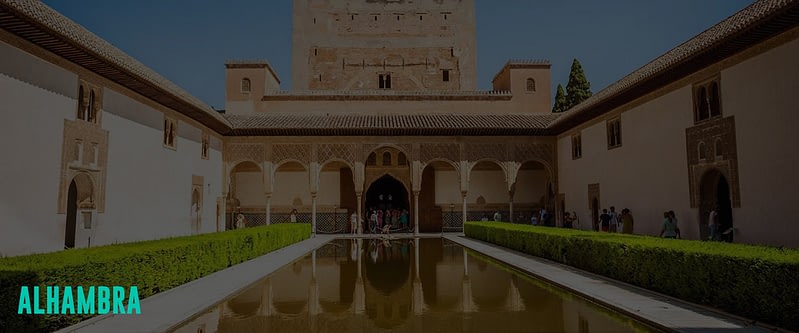
The Alhambra, in Granada, Andalusia, Spain, is a renowned palace and fortress complex known for its Islamic and Spanish Renaissance architecture. Its construction began in 1238 and stands as one of the best-preserved palaces of the historic Islamic world. Once the residence of the Nasrid sultans, its courtyards, halls, Generalife gardens, and citadel are captivating.
The Nasrid palace within the complex features intricate stone carvings, delicate filigrees, tile-lined ceilings, graceful arches, and serene courtyards. The adjoining castle for Emperor Charles V showcases High Renaissance architecture, and the Generalife’s terraced gardens provide splendid views of the Alhambra.
The Alhambra is part of Granada’s attractions, including the UNESCO-listed Albaicín, the Royal Chapel, and the Sacromonte quarter. The palace complex, expressing Moorish and Andalusian culture, was added to the World Heritage List in 1984.
The Great Mosque of Córdoba (La Mezquita)

The Great Mosque of Córdoba, locally known as Mezquita-Catedral, is a historic structure in the Old Town of Cordoba, Andalusia, Spain. The complex has a rich history dating back to the late 8th century and is renowned for its Islamic and Moorish architecture. It started as a Roman temple, was converted into a church by Visigoths, and later transformed into a mosque by the Umayyads. The Great Mosque became a cathedral after the Reconquista, with its original Moorish elements preserved.
The prayer hall is highlighted, featuring 856 columns crafted from various materials excavated from a Roman temple on the site. It includes a courtyard with an orange grove and a squared bell tower enclosing the original minaret.
Another notable feature is the horseshoe-arched mihrab, indicating the direction of Mecca. It is adorned with intricate calligraphy and gold tesserae. The horseshoe arch, typical in Visigothic architecture, spread across Western Islamic architecture. The dome above the mihrab showcases innovative architectural techniques with crisscrossing ribs and gold mosaics.
The Great Mosque of Córdoba exemplifies the Muslim world’s ability to blend regional traditions with innovative styles, creating a distinctive and recognizable Islamic architectural vocabulary. This UNESCO World Heritage Site is a two-hour train ride from Madrid.
El Escorial
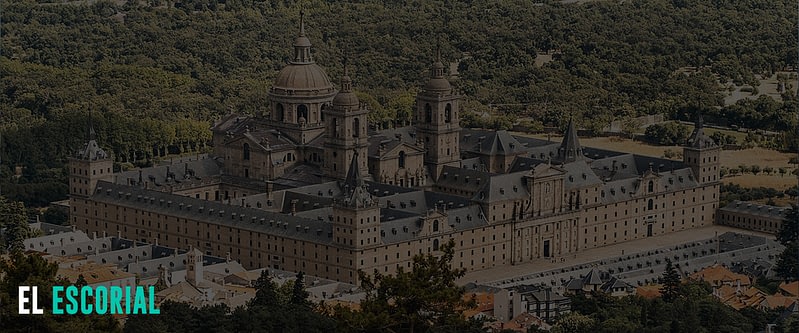
El Escorial, or Royal Site of San Lorenzo de El Escorial, a town northwest of Madrid, is known for its historical significance and architectural grandeur. Home to La Granjilla, a 16th-century park and palace created by King Philip II, El Escorial boasts exquisite architecture, priceless artworks, and frescoes. It served as the summer home of Spain’s kings and the political center of the Spanish Empire and can be reached just an hour from Madrid.
Constructed in 1584, El Escorial is the largest Renaissance building globally, featuring a royal palace and monastery. As a UNESCO World Heritage site, it reflects Spain’s influence in the Christian world. The vast architectural complex, built around 16 courtyards, includes a church with Herrera’s 30-meter-high retablo, a pantheon of Spanish kings, and a library adorned with Tibaldi frescoes. Additionally, the complex has a museum, basilica, and a palace, demonstrating its multifunctional significance.
El Escorial’s exterior is characterized by a symmetrical and unornamented appearance, deviating from the ornate Plateresque style popular in the Iberian Peninsula. In contrast, El Escorial’s interior features elaborate decorations, frescoes, and depictions of kings and saints. Artists like Federico Zuccaro, Pellegrino Tibaldi, Claudio Coello, Luca Giordano, and El Greco contributed to the intricate ornamentation.
The basilica houses works by renowned artists, including Tibaldi’s Martyrdom of St. Lawrence. El Escorial became a repository for artworks, including pieces by Titian and Flemish painters like Hieronymous Bosch. The complex symbolizes Imperial Spain, and Philip II encouraged visitors to marvel at its magnificence, showcasing his refined taste during the Renaissance.
Royal Alcázar of Seville
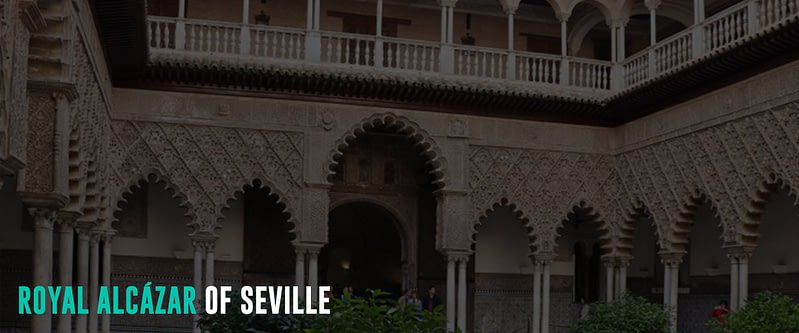
The Alcázar of Seville, officially known as the Royal Alcázar of Seville, is a historic royal palace in Seville, Spain. Dating back to the 10th century, Alcazar is originally the site of an Islamic-era citadel. It evolved into a larger palace complex under the Abbadid dynasty and the Almohads. As the oldest royal palace in Europe still in use today, it was designated a UNESCO World Heritage Site in 1987.
The Royal Alcazar’s grounds comprise various palaces and gardens representing diverse architectural styles, including Islamic, Gothic, Renaissance, Baroque, and Romantic elements. Notable features include the Lion’s Courtyard, Patio del Yeso, and Hunting Courtyard leading to the Mudejar Palace, Gothic Palace, and House of Commerce. The Palace of King Pedro, resembling a colossal altarpiece, exhibits Islamic and Byzantine decorative themes.
The Courtyard of the Crossing and Courtyard of the Maidens showcase the palace’s historical and aesthetic significance, blending Castilian and Islamic design. The Hall of Ambassadors boasts a lavish dome, a palace highlight. The Courtyard of the Dolls is believed to be a domestic courtyard used by the queen.
The Alcázar fuses Romanesque, Gothic, and Renaissance architecture, exemplifying Mudejar’s construction. Built for King Peter of Castile in the 14th century, it sits atop a Moorish royal palace featuring Islamic-style tilework, landscaped gardens, water features, and sculptures.
The Prado and Paseo del Artes
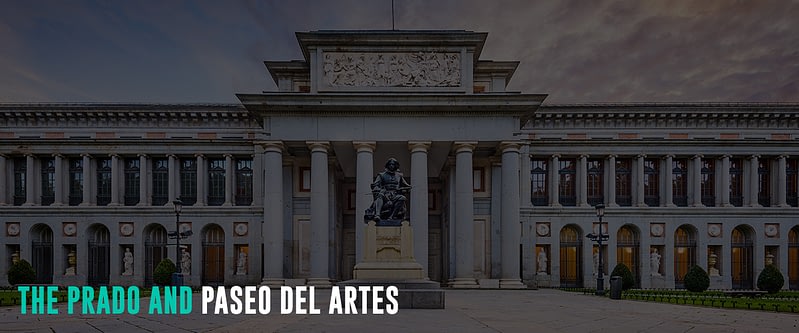
The Prado Museum, officially Museo Nacional del Prado, in central Madrid, is considered one of the world’s finest art museums. Founded in 1819, it houses an extensive collection of European art dating from the 12th to the early 20th century, sourced from the former Spanish royal collection. The museum is renowned for its impressive holdings of Spanish art, featuring works by El Greco, Velázquez, and Goya and masterpieces by Italian and Flemish artists. Moreover, the Prado exhibits medieval murals, Flemish and Dutch paintings (including works by Bosch, Rubens, and Brueghel), and Italian art (featuring Botticelli, Raphael, Correggio, Titian, and Tintoretto).
The Prado is the largest art museum in Spain, attracting visitors worldwide. Its extensive collection comprises 8,200 drawings, 7,600 paintings, 4,800 prints, and 1,000 sculptures. The most famous work in the Prado is Velázquez’s “Las Meninas,” a 16th-century oil painting depicting the Spanish royal family.
Forming part of El Paseo del Arte, the Boulevard of the Arts, alongside the Reina Sofía National Art Museum, the Thyssen-Bornemisza National Museum, and the CaixaForum, the Prado Museum stands as one of Madrid’s top tourist attractions for art lovers and enthusiasts.
Royal Palace of Madrid
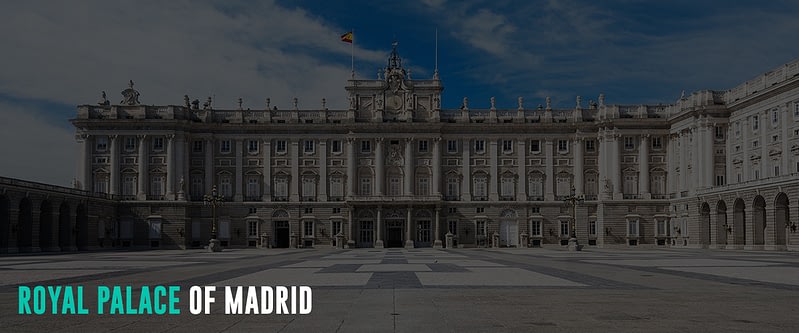
The Royal Palace of Madrid, the official residence of the Spanish royal family, is a grand and historic landmark in the heart of the city. Though currently utilized solely for state ceremonies, it has a rich history and architectural significance.
It is the largest and most opulent palace, built in the 18th century by Philip V on the grounds of the former Alcázar fortress. It spans 135,000 square meters and houses 3,418 rooms. The castle boasts a mix of architectural styles, including Baroque, Neoclassical, and Rococo. Its façade, with two towers and a central archway overlooking the Plaza de Oriente, showcases its magnificence. Moreover, the interiors feature a grand staircase. Other notable areas within the palace include the Royal Guards’ Room, the Columns Room, the Hall of Mirrors, and King Charles III’s room, adorned with works by renowned artists like Velázquez, Goya, Rubens, El Greco, and Caravaggio. In addition, the palace displays priceless artifacts such as artworks, furniture, tapestries, porcelain, and weapons.
The massive gate does not protect the palace, allowing visitors to explore its splendors and regal history.
Montserrat Nature Park and Monastery
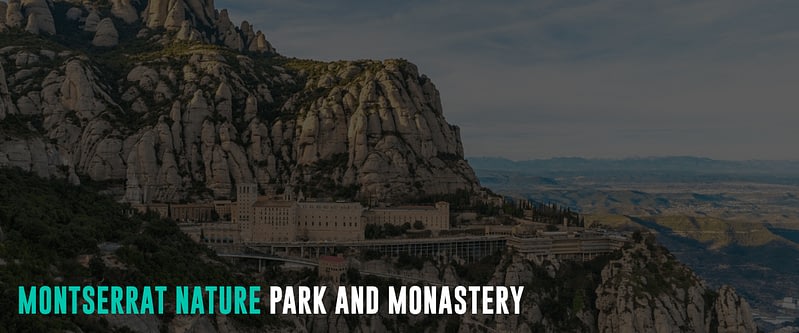
Montserrat, located 50 km northwest of Barcelona in Catalonia, Spain, is a captivating multi-peaked mountain range within the Catalan Pre-Coastal Range. Home to the Benedictine abbey, Santa Maria de Montserrat, the site is renowned for the Virgin of Montserrat sanctuary. A popular pilgrim destination, the monastery houses an ancient wooden statue of the Virgin Mary and Child Jesus. The sculpture was supposedly carved by St. Luke, taken to Spain by St. Peter, and hidden in a cave during the Moorish occupation. It was discovered in 880 and has since been worshipped by numerous pilgrims who attribute many miracles to the intercession of the Virgin Mary.
Surrounding the monastery is the Montserrat Natural and Geo Park, featuring imposing and impregnable massifs at 1236m-high bulk. The park offers exceptional hiking terrains with ravines, brooks, and stunning landscapes, making it a highlight for many visitors.
The journey from Barcelona to Montserrat takes about an hour by train, making it a popular destination. Visitors can take a funicular to the mountaintop and choose from various walks, offering amazing Catalonian countryside views.
La Concha

La Concha Beach in San Sebastian, Spain, is a crescent-shaped beach famous for its breathtaking beauty and distinctive shape. The crescent shape, bordered by lush hills and white buildings, adds to its allure, making it among Spain’s most beautiful beaches. Its location in the Bay of Biscay in the Basque Country ensures protection from the open sea. Furthermore, the location provides excellent swimming conditions, kayaking, and water skiing. Visitors can also enjoy leisurely walks along the beach and sunbathe for sun-kissed skins.
Apart from the beach activities, La Concha offers delectable seafood at nearby restaurants and beachside cafes. Visitors can ride the vintage funicular to the amusement park at the summit for a unique perspective. Moreover, this area provides panoramic views of San Sebastian’s coastal scenery, including the beach, bay, and offshore Santa Clara Island.
Costa del Sol

Spain is renowned for its beautiful beaches and coastal areas. One of the most famous beach destinations in Spain is Costa del Sol. Translating to the “Coast of the Sun or Sunshine Coast,” this region in Andalusia, southern Spain, comprises the coastal towns along the coastline of Málaga. It is famous for its stunning beaches, year-round warm climate, and vibrant nightlife. Popular towns and resorts along the Costa del Sol include Marbella, Torremolinos, and Fuengirola.
Marbella, in particular, is a well-known luxury destination with glamorous beaches, upscale amenities, and a picturesque old town. The Costa del Sol offers diverse beaches, from family-friendly stretches of golden sand to more secluded coves.
Costa Brava

Costa Brava in Catalonia, Spain, offers an enticing blend of scenic wonders, cultural richness, and exquisite cuisine. It features rugged cliffs, hidden coves, and crystal-clear waters. Stretching from Blanes to Portbou, this coastal haven boasts over 200 kilometers of coastline. It features the Blue Flag beaches, charming villages, and captivating coves. The cities of Girona and old fishing villages like Cadaqués add to the region’s allure.
For those yearning for seaside escapes, tourist resorts like Lloret de Mar and the enchanting bays of Roses and Tossa de Mar beckon. The coastline also harbors three natural parks—Cap de Creus, Aiguamolls de l’Empordà, Montgrí, Illes Medes I el Baix Ter—ideal for nature enthusiasts. Scuba diving enthusiasts can explore the renowned Medes Islands.
The Costa Brava isn’t just about beaches; it’s also a cultural and culinary haven. The birthplace of Salvador Dalí, Figueres houses the eccentric Dalí Theatre Museum. Other cultural gems include the Salvador Dalí Museum House in Cadaqués and the Gala-Dalí Castle Museum in Púbol. Medieval villages like Pals and Peratallada, along with the city of Girona (featured in Game of Thrones), offer a glimpse into history.
Primary Spoken Language(s)
Spain is a multilingual state, with Spanish as the primary official language natively spoken by 74% of the population. Other official languages in autonomous communities are Galician in Galicia, Catalan in Catalonia, Basque in the Basque Country and Navarre, and Valencian in Valencia and the Balearic Islands.
Other foreign languages by the immigrant communities include Moroccan Arabic, Romanian, and English.
Safety Concerns

Spain ranks 31st out of 163 countries on the 2023 Global Peace Index. Also, Spain has a Level 2 Travel Advisory from the US Department of State. Hence, travelers in Spain can take precautions as they would anywhere else.
Spain is safe for tourists, although petty crimes like pickpocketing, theft, car break-ins, and scams are high, especially in the metropolis of Madrid and Barcelona. But these can be avoided with common sense and safety precautions.
Watch your valuables in large crowds, public transportation, shopping centers, and markets. Exercise caution at Madrid’s Spanish Flea Market (el Rastro) over the weekends. Travelers must also beware of scams with women offering rosemary and read your future. They will then ask for some money or pick your pockets with the help of another woman. In addition, always check the bill twice in restaurants and bars, as the staff might try to overcharge or charge for something you did not order. Lastly, avoid areas with protests and demonstrations.
Dial the hotline 112 or use the AlertCops free mobile application in emergencies. The app is a complementary channel to contact the police. It can notify law enforcement authorities of an alert, information, data, or news about a crime or security incident.
Budget Considerations

Spain is a famous worldwide holiday destination offering a range of options for all types of travelers. Depending on travel preferences and accommodation choices, traveling to Spain doesn’t have to break the bank. Thus, the country is accessible to the budget-conscious and those seeking luxury experiences.
Accommodation
The accommodation cost in Spain varies depending on the travel season and location. Notably, prices are slightly lower outside major cities. Also, accommodation costs in Spain can double during summer, especially in Barcelona and Madrid.
But generally, a bed in a hostel dorm starts at $16 in Barcelona and $25 in Madrid. Free wifi is standard, and most serve complimentary breakfast. Travelers can also get a private room in hostels and budget hotels for $35 and $65 per night. In addition, travelers will find apartments and holiday homes between $40 and $80. Likewise, visitors looking for more comfort can stay in a three-star hotel for $65 and $140 for a five-star hotel.
Additionally, there are several beachfront properties in Spain for those looking to relax and enjoy the beachfront. From $50 in Costa Brava, Girona, to $110 in the Canary Islands and $330 in Barcelona, travelers can enjoy the beach in the comfort of their nearby accommodations.
Food
Spanish cuisine is famous worldwide, with olive oil, Iberian ham, and Spanish wine as star ingredients. Although each region has its local dishes, common favorites are paella, gazpacho, churros, tortilla (omelet), jámon ibérico (cured pork), and patatas bravas (fried potatoes with sauce).
Nonetheless, travelers can find tapas and sandwiches ranging from $5.50 to $10. Fast food combo meals and cheap Asian restaurants cost $8.75 and $11, respectively. Meanwhile, a casual Spanish restaurant meal costs around $15 to $30. Travelers who want to splash out on meals can have a multi-course meal at fine and Michelin-star restaurants from $50.
Meanwhile, visitors who want to cook can expect to spend $40 to $60 weekly on groceries. It includes basic staples like rice, pasta, meat and seafood, and seasonal produce.
Attractions and Transportations
Spain’s famous beaches and coastal destinations are generally free and open to the public. However, expect to pay for watersport equipment rentals and activities. Meanwhile, admission to the Basilica La Sagrada Familia with an audio guide costs $28.50, while a ticket to Alhambra costs $21. Visitors can explore the Great Mosque of Córdoba at 16.50 and El Escorial at $14.20.
For budget travelers, public transportation in Spain is relatively more affordable than in the neighboring European countries. Depending on the zone and travel distance, a one-way train ticket costs $1.85, while a bus ticket costs $1.55. Expect to pay at least $3 for short-distance taxi trips. Lastly, travelers who want more flexibility and comfort to explore many destinations can rent a car for $40 daily or an e-scooter for $26.
Average Two-Week Cost
Budget travelers in Spain can live with a $55 daily budget or $770 for two weeks. The budget covers the costs of sleeping in hostel dorm beds, trying out cheap meals or shopping and cooking your food, taking public transport, and mainly doing free activities.
On the other hand, mid-range travelers spend at least $140 daily or $1960 for two weeks. It includes staying in a three-star hotel, taking occasional taxis, dining in local restaurants, doing a few paid activities, and visiting several attractions.
Lastly, travelers can enjoy luxury and privacy in Spain from $280 daily to $3920 for two weeks. It includes staying in five-star hotels or resorts, splashing out on meals, taking domestic flights, and renting a car for transport. They can also avail of all the paid tours and activities they want. So, for them, the sky is the limit for travel.
Customs And Import Restrictions

EU citizens carrying goods for personal use purchased within the EU are tax-free. On the other hand, non-EU visitors entering Spain, the autonomous cities of Ceuta and Melilla, and the Canary Islands by sea or air have tax-free allowance worth €430 (around $469) for those over 15 years old and €150 ($164) for those below 15. Meanwhile, visitors traveling by land can bring personal goods worth €300 (around $328). It can include clothing, souvenirs, gifts, perfumes, and medications with prescriptions.
Regardless of the above value, travelers at least 17 years old also have duty-free allowances for alcohol and tobacco products not exceeding the following:
- 200 cigarettes, 100 cigarillos, 50 cigars, 250g smoking tobacco, or a proportionate combination of these goods
- One liter of ethyl alcohol (equal to or greater than 80%), one liter of liquor with over 22% alcohol content, or two liters of other alcoholic drinks with less than 22% alcohol.
- 4 liters of still wine
- 16 liters of beer.
Andorra
The customs regulations of Andorra allow travelers to bring personal luggage worth €900 ($983) for ages 15 years and over and €450 for ages under 15. These are provided the goods are not for commercial use.
Regardless of the above values, the following quantitative limits will be tax-exempt:
- 300 cigarettes, 150 cigarillos (cigars with a maximum weight of 3 g/unit), 75 cigars, 400 g of smoking tobacco, or a combination of such goods within the total limit.
- 1.5 liters of liquor with over 22% alcohol content, 3 liters of alcoholic beverages with below 22% alcoholic strength, fortified or sparkling wine, or a proportionate combination of these goods.
- 5 liters of still wine
- 16 liters of beer
- 75 g of perfume and 37.5 cl of cologne water; 1,000 g of coffee and 400 g of coffee extract or essences; 200 g of tea and 80 g of tea extract or essences.
- Food products (2.5 kg of powdered milk, 3 kg of condensed milk, 6 liters of liquid milk, 1 kg of butter, 4 kg of cheese, 5 kg of sugar and sweets, and 5 kg of meat) with total accumulated value not exceeding €300 for ages 15 and over, or €150 for those under 15 years of age.
- Fuel content in the standard tank of the traveler’s means of transport and the content in a portable tank that does not exceed 10 liters.
Import Restrictions
Import and export of some goods are prohibited or restricted in Spain. The following are the main categories of affected goods:
- Pets and companion animals
- endangered species of flora and fauna
- foods of animal origin
- seeds, plants, and vegetables
- medicine, healthcare, and cosmetic products
- weapons and ammunition
While personal medications with prescriptions are allowed, controlled substances, narcotics, and illegal drugs are strictly prohibited in Spain.
Visit the Spanish Tax Administration Agency portal for the complete list of individual travelers’ duty-free allowances and import restrictions.
Climate Considerations

Spain is a sunny country with moderate temperatures, although there are differences depending on the location and season. The country has four seasons: spring (April-June), summer (July-September), autumn (October-December), and winter (January-March). Daytime temperatures during summer are usually around 30 °C depending on the location but can drop to 20 °C at night in the south. During winter, the mean maximum is 16 °C, while the minimum is 7 °C. Notably, the northern part of Spain experiences frequent rainfall during winter.
Primary Transportation Options

Spain has a well-developed transportation system, although getting around involves various considerations. Moreover, Spain has a comprehensive transportation network infrastructure system comprising air routes, ports, extensive road networks, high-speed rail, and rapid transit systems. Its strategic location positions it as an essential link between Europe, Africa, and the Americas. The transportation system is organized around Madrid, with significant transit routes radiating outward to connect with the capitals of autonomous communities.
Check out helpful information on distances and connections between the main Spanish cities when organizing and planning a trip around the country.
Air
Spain has excellent air connections between the major cities, with flights generally shorter than two hours, except to the Canary Islands. Hence, air travel is the fastest transport to the Canary Islands from the rest of Spain.
The country has 46 airports and two heliports. Madrid, Barcelona, Palma de Mallorca, Málaga – Costa del Sol, Gran Canaria, Alicante/Elche, and Tenerife Sur are the main Spanish airports according to passenger traffic.
Iberia Airlines is Spain’s flag carrier airline based in Madrid. It operates an international network of services and regularly offers reasonable airfares with advance booking. In addition, Iberia Airlines provides top-tier services to travelers seeking luxury and a premium experience. For low-cost options, airlines like Vueling, Air Europa, and Ryanair make travel affordable without compromising quality.
Boat
Spain boasts significant cruise ports, with Barcelona, Palma de Mallorca, Las Palmas, Santa Cruz de Tenerife, Malaga, Cadiz, Valencia, and Bilbao prominent in tourist traffic. These ports connect to various destinations, including the Canary Islands, the Balearic Islands, Ceuta, and Melilla.
Opting for boat or ferry travel to these destinations allows for a leisurely experience, especially if bringing a car, motorbike, or bicycle on board. Key shipping lines like Armas, Baleària, and Trasmediterránea provide regular trips from major peninsula cities and hourly connections within the Balearic Islands (Ibiza, Mallorca, Formentera, and Menorca) and the Canary Islands. Passengers can choose between booking seats or cabins with beds for a comfortable journey.
A comprehensive guide chart outlines routes, operating companies, and approximate durations for boat and ferry trips in Spain.
Rail
Spain’s national railway company, RENFE, operates approximately 5000 trains daily nationwide. The AVE (Alta Velocidad Española) is a preferred choice for long-distance travel. It runs up to 310 km/h, connecting Madrid to distant cities like Barcelona in just 2.5 hours. Meanwhile, the RENFE Alvia trains serve northern cities and regions, providing high-speed travel with intermediate stops. Travelers seeking nearer day-trip destinations can opt for RENFE Avant mid-distance high-speed trains or the Media Distancia trains.
A recent addition to RENFE’s fleet is the Avlo trains, combining high speed with low cost. Particularly accommodating for passengers with reduced mobility, these trains feature platform-level entrances. It has H seats for travelers in wheelchairs and adapted toilets for disabled individuals.
Spain also boasts more minor regional train services, catering mainly to commuters. These include FGC in Catalonia, Cercanias RENFE (managing suburban rail networks), and Euskotren (connecting Bilbao, San Sebastian, and smaller towns).
Consider getting the Renfe Spain Pass, valid from four to 10 days. Another option is the Eurail Spain Pass, which starts at $166 for three days when planning to take exclusively rail travel within Spain. Likewise, travelers can choose the Eurail Global Pass for multiple-country passes.
Another unique way to get around Spain and enjoy the scenic views is by embarking on an amazing experience aboard tourist trains. This experience offers a perfect blend of luxury and scenic beauty. From week-long luxury tourist train trips reminiscent of historical rail journeys to day trips featuring lively performances by actors, train travel becomes a delightful adventure, complete with buffet breakfasts, product tastings, and exclusive tours. In addition, travelers can choose to journey with the Tren dels Llacs, Cervantes, Strawberry, Philip II, Soller, and Campos de Castilla trains.
Car
Renting a car in Spain offers flexibility but comes with pitfalls, costs, and responsibilities. Aside from traffic congestion in the cities, finding parking spaces can be challenging. While a car is unnecessary for city exploration in Madrid, Barcelona, Seville, and more, certain regions like Asturias, Galicia, and other off-the-beaten-path areas may benefit from a car hire for efficient exploration. Car hire for village visits and outdoor areas is also popular in the Balearic Islands, Jaen, Almeria, or Huelva. Rental rates start at $40, depending on the number of days rent and car type.
For a sustainable and convenient alternative, travelers can consider renting e-scooters or bikes when exploring larger urban areas. City bike rentals start at $5.50 for an hour, while e-scooters daily rental costs $26.
Spain drives on the right side of the road, and drivers must have an international driving permit for nationals outside the European Union and European Economic Area. Also, note that renters must be at least 21 years old, and the rental rates tend to be higher for ages below 25.
Bus
Buses in Spain offer an economical and convenient mode of transportation, especially to destinations where trains may not be available. While the bus system in Spain may take longer than high-speed trains, it covers almost every small town, making it a comprehensive option for travelers. Hence, locals and tourists prefer buses as Spain’s prime transport.
Although several bus service providers exist in every city, ALSA is the most prominent and largest bus company. They serve all the major cities nationwide and provide consistent quality service and punctuality. Other popular and trusted bus companies are Avanza and Monbus. Travelers can also check out Movelia for the most comprehensive information on available national bus routes (and even international ones), schedules, and booking options.
Public Transport
Most major cities boast well-developed public transportation networks. For example, Madrid and Barcelona have extensive metro systems, while Valencia, Zaragoza, Bilbao, and Seville have limited but practical metro or light rail systems. In addition, almost all big cities also have a comprehensive bus system.
Metro Systems
Madrid boasts an extensive and efficient metro system, with Metro de Madrid managing and operating most of the network. It is one of the largest networks in Europe and is a popular choice for locals and tourists alike.
In Barcelona, the Transports Metropolitans de Barcelona (TMB) is another well-developed network serving the city and its surrounding areas. TMD offers an efficient way to navigate the urban landscape. It operates various lines and bus routes connecting important districts and landmarks. The system is reliable, efficient, and easily accessible.
Taxis and Ride-Sharing
Taxi services are convenient for short-distance travel in Spain, especially if someone is in a hurry. The flag-down price of a taxi starts at $2.50, with an increment of $1.30 for every kilometer during weekdays, 8 am to 8 pm. Surcharge applies during weekends, holidays, and night rides. Another flexible ride option for travelers is Uber, although it is unavailable in all cities.
An eco-friendly and popular choice for navigating Spanish cities and towns is car-sharing. BlaBlaCar stands out as a widely used service, facilitating cost-effective travel over long distances. Users can book or share rides, pick-up points, and expenses through the BlaBlaCar website. This proves economical and offers an excellent opportunity to connect with locals. Furthermore, it enhances the travel experience and provides a chance to practice Spanish.
Start Trip Planning
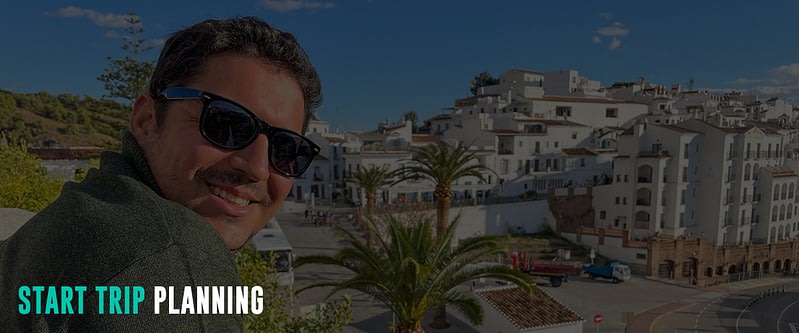
Travel-Wise is made from the ground up to help people travel more, break down the barriers that make it challenging to get going, and start your journey as painlessly as possible. Bookmark our other Country Guides to help kick-start your research for future travels. We also offer templated itineraries from our staff and community that help serve as a building block for your trip plans. Alternatively, we also utilize AI to offer a way to generate itinerary ideas. This saves much time just getting you up and running with a template. From there, you can use the trip planner to create your customized itinerary, invite friends and family for collaboration, find others from Travel-Wise to join the trip, book and track important information, journal, and share your experiences at the end or along the way!

